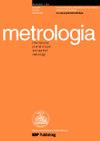Anomaly detection for atomic clocks using unsupervised machine learning algorithms
IF 2.4
3区 工程技术
Q2 INSTRUMENTS & INSTRUMENTATION
引用次数: 0
Abstract
Atomic clocks are the most accurate timekeeping instruments in the world and play a crucial role in numerous applications, notably in satellite navigation. Nonetheless, the accuracy of these clock signals is subject to anomalies, highlighting the importance of anomaly characterization and detection. In our study, we identify three types of anomalies in the phase data of atomic clocks—outliers, phase jumps and inflection points, and also frequency jumps in the frequency data, which corresponds to the inflection points. The novelty of our work lies in the application of machine learning methods for atomic clock anomaly detection (AD), as opposed to traditional algorithms. We introduce a variety of unsupervised AD and change point detection (CPD) algorithms from the realms of statistics and machine learning, propose a customized thresholding function for AD, and evaluate AD and CPD algorithms on both synthetic and real-world atomic clock data. Our experiments reveal that the subsequence local outlier factor algorithm achieves excellent performance in detecting outliers and phase jumps, but struggles with inflection points. Crucially, we found that the application of a CPD algorithm specifically for detecting the frequency jumps in frequency data substantially improves performance. Our study adopts unsupervised machine learning methods for AD provides robust detection strategies, thereby contributing an expanded understanding of the use of machine learning for clock data monitoring.使用无监督机器学习算法进行原子钟异常检测
原子钟是世界上最精确的计时仪器,在众多应用中发挥着至关重要的作用,特别是在卫星导航方面。然而,这些时钟信号的准确性受到异常现象的影响,这凸显了异常特征描述和检测的重要性。在我们的研究中,我们发现了原子钟相位数据中的三种异常--异常值、相位跃变和拐点,以及与拐点相对应的频率数据中的频率跃变。与传统算法相比,我们工作的新颖之处在于将机器学习方法应用于原子钟异常检测(AD)。我们从统计学和机器学习领域引入了多种无监督 AD 和变化点检测 (CPD) 算法,为 AD 提出了一个定制的阈值函数,并在合成和真实世界的原子钟数据上评估了 AD 和 CPD 算法。我们的实验表明,子序列局部离群因子算法在检测离群值和相位跃迁方面表现出色,但在检测拐点方面却举步维艰。重要的是,我们发现应用 CPD 算法专门检测频率数据中的频率跃变,可以大幅提高性能。我们的研究采用了无监督机器学习方法,为 AD 提供了稳健的检测策略,从而拓展了机器学习在时钟数据监测中的应用。
本文章由计算机程序翻译,如有差异,请以英文原文为准。
求助全文
约1分钟内获得全文
求助全文
来源期刊

Metrologia
工程技术-物理:应用
CiteScore
2.80
自引率
25.00%
发文量
137
审稿时长
12 months
期刊介绍:
Published 6 times per year, Metrologia covers the fundamentals of measurements, particularly those dealing with the seven base units of the International System of Units (metre, kilogram, second, ampere, kelvin, candela, mole) or proposals to replace them.
The journal also publishes papers that contribute to the solution of difficult measurement problems and improve the accuracy of derived units and constants that are of fundamental importance to physics.
In addition to regular papers, the journal publishes review articles, issues devoted to single topics of timely interest and occasional conference proceedings. Letters to the Editor and Short Communications (generally three pages or less) are also considered.
 求助内容:
求助内容: 应助结果提醒方式:
应助结果提醒方式:


